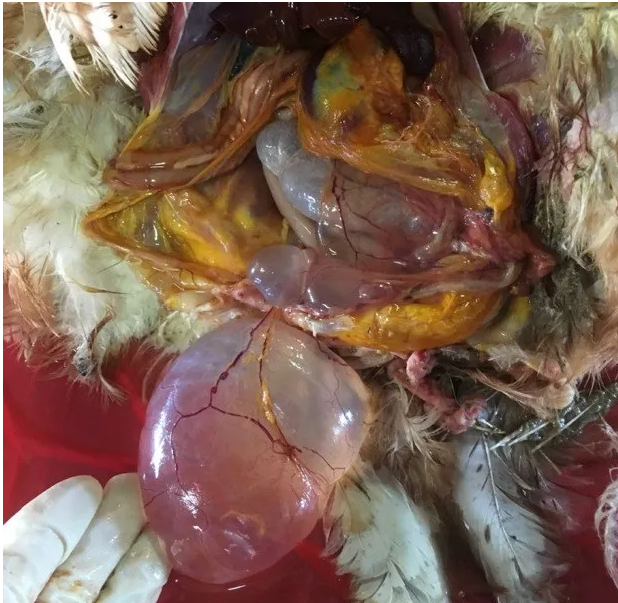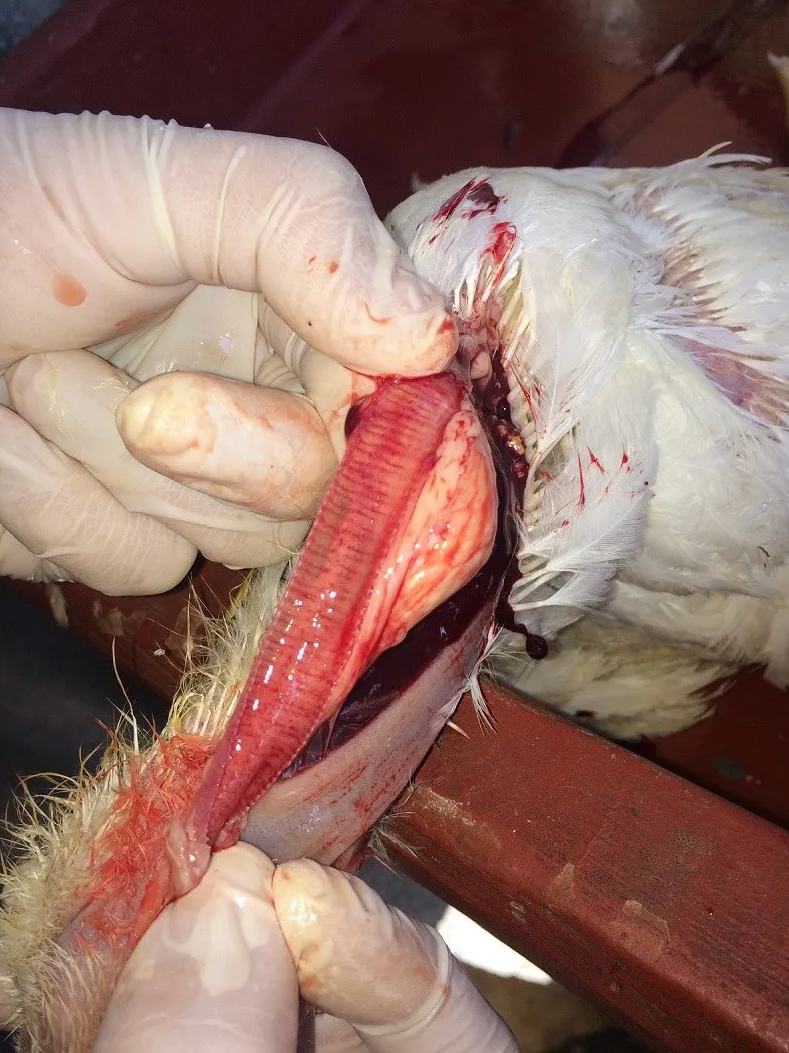



Is infectious bronchitis a problem on your operation?
Infectious bronchitis (IB) causes a reduction in egg production and qualityInfectious bronchitis is a highly contagious, acute infection of chickens characterized by nasal discharge, coughing, and rales. In layers, it causes a marked reduction in egg production and quality. Infectious bronchitis is caused by an avian coronavirus, an enveloped single-stranded RNA virus with characteristic spike-like projections on the surface of its envelope. Variation in the viral spike protein gives rise to multiple strains of the virus, which may vary regionally.
The virus transmits rapidly through the flock, causing respiratory distress. Mortality is usually low in uncomplicated infections; however, some viral strains have tropism for the kidneys, which causes mortality due to kidney failure. Complications, such as coinfection with other pathogens, may also increase mortality. Strain-specific vaccination and stringent biosecurity practices can help prevent infection.
Clinical signs
Conjunctivitis and nasal discharge are commonly observed. After a few days post-infection, most of the flock will show coughing and respiratory distress due to increased mucus in the trachea (Figure 1). In uncomplicated cases, clinical signs subside after one week. However, coinfection with opportunistic bacteria can complicate the disease. Nephropathogenic strains may cause high mortality due to kidney failure.
In layers, a significant drop in egg production is often observed, and there may be an increase in the production of thin, wrinkled egg shells for several weeks. Some strains of the virus can induce permanent damage to the oviducts of female chickens that are infected as pullets.
The damage can be so severe that it prevents egg production for the life of the animal. Even though the oviduct is nonfunctional, ovulation still occurs, and the yolks accumulate in the abdomen of the animal. With time, the nonfunctional oviduct fills with clear fluid (Figure 2) which, in addition to the accumulation of yolks, causes abdominal distention and forces the birds to stand upright (penguin-like posture).
Due to the persistence of ovulation, these layers have bright red combs and wattles. Yellow pigment does not accumulate in the beak and legs as it does in layers that fail to ovulate. Thus, these animals are known as "false layers".


Occurrence
Infectious bronchitis virus is present worldwide, but only causes disease in chickens. Infection can occur at any age, but infection in very young animals may increase the risk of mortality. In unvaccinated flocks, it is common to have morbidity near 100%. In layers and backyard flocks, it is not uncommon to have mixed infections with Mycoplasma (M. gallisepticum or M. synoviae) and opportunistic bacteria (E. coli), which increase the severity of the disease.
Transmission
The virus is transmitted to the upper respiratory tract by either direct bird-to-bird contact or exposure to fomites. Once an animal is infected, viral replication occurs in the respiratory tract and digestive tract. After an initial viremia the virus reaches other organs (gonads, kidneys), where it multiplies. The virus is not transmitted through the egg.
Clinical signs can be observed after a short incubation period (~24-48 hrs). Infected birds shed virus in their respiratory secretions and droppings. In uncomplicated cases, recovery begins after one week, but the flocks may continue to test positive and shed virus for ~15-20 weeks.
Diagnosis
Presumptive diagnosis can be made by clinical signs and clinical history. Confirmation is generally needed due to the large number of diseases that show similar symptoms. Serology can be used for diagnosis if an elevation in antibody titers can be demonstrated. Thus, two samples are needed, one at the beginning of disease and a second sample 10 days later.
Identification of serotype is recommended, especially if vaccinated animals develop the disease. RT-PCR is recommended to identify genotype, which has replaced serotyping to determine the identity of a strain.
Necropsy findings include clear exudate in the sinuses, edematous tracheal mucosa, which may be hyperemic with petechial hemorrhages (Figure 3), and mild foamy airsacculitis which may become purulent if the lesions are contaminated with E. coli.
Strains of infectious bronchitis with renal tropism will affect the kidneys; they may appear pale and enlarged, with a prominent reticular pattern, due to severe nephritis. Ureters are often distended with urates. The ovary may show follicular regression.

Differential diagnoses
Newcastle Disease, mycoplasmosis, infectious laryngotracheitis, low pathogenicity avian influenza, infectious coryza
Prevention
Vaccines are available commercially. The vaccine must be of the same serotype as the field strain to generate protective immunity. In general, live vaccines are used in young animals either by spray or drinking water applications.
Because many backyard flocks are unvaccinated, biosecurity plays a fundamental role in the prevention of infectious bronchitis. Stringent biosecurity practices, covering all aspects of the operation, are needed to keep flocks healthy. Before the arrival of new birds, the poultry house and equipment must be disinfected.
Being an encapsulated virus, it is susceptible to most common disinfectants and is also fairly susceptible to heat: fifteen minutes at 56 °C inactivates the virus (Rabenau et al 2005). In addition, pests such as rodents and insects must be under control.
Restrict the movement of equipment, personnel, and poultry between flocks. Avoid bringing new animals into the flock.
Learn more about infectious bronchitis.








